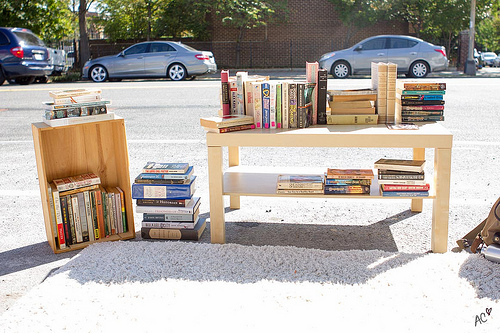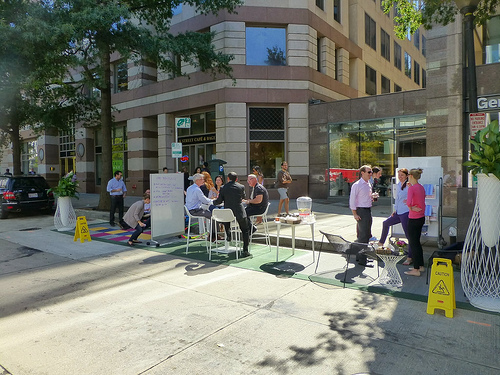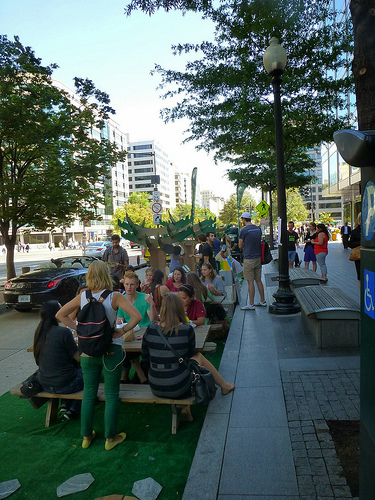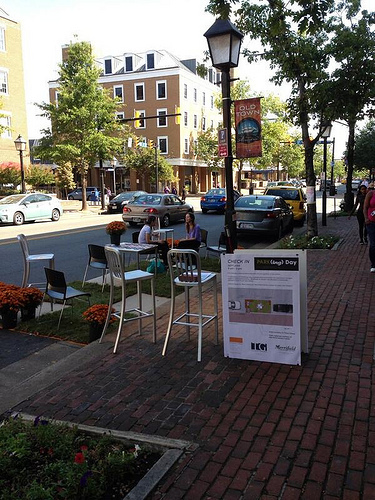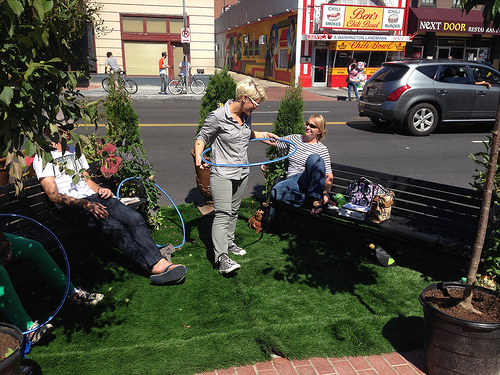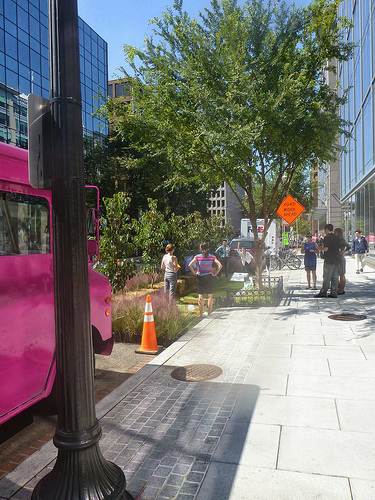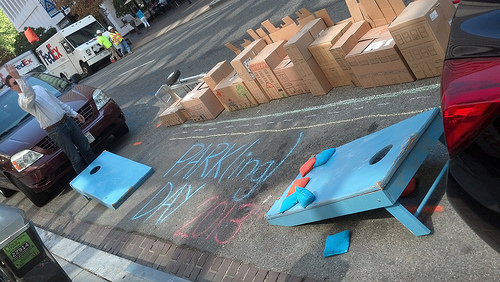
Last Friday, the region celebrated Park(ing) Day by turning parking spaces into parks. 22 pop-up parks sprouted in the District and Northern Virginia, encouraging people to imagine what they could do with space normally given over to cars.
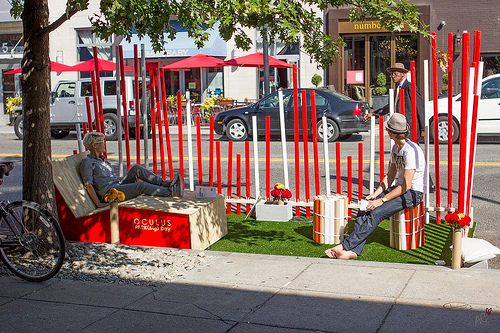
Landscape architecture firm Oculus’ Park(ing) Day installation in DC. Photo by Aimee Custis on Flickr.
Started in San Francisco in 2005, Park(ing) Day aims to illustrate alternative uses for precious urban space. Like pop-up stores or restaurants, which let entrepreneurs test consumers’ preferences for new food, drink and products, pop-up parks gauge demand for more permanent parklets by inviting passers-by to take a contemplative rest, engage in conversation, or play.
History Matters’ pop-up park in DC invited visitors to mull over books.
On K Street, Gensler’s pop up park brought the indoor office outside, complete with dry erase boards to brainstorm ideas.
Jennifer Simmons, who organized Gensler’s parklet, said they wanted to be mindful of not wasting materials. The carpet squares will be sent back to the manufacturer for use as floor samples. Some of the furniture was from Gensler’s office.
Picnic tables were packed with people at Casey Trees’ parklet, also in DC. Timothy Hoagland, Digital Media Associate of Casey Trees, explained that they wanted to engage people to think more about public green space and its fun uses.
Across the river in Old Town Alexandria, café seating in a parking space invited people to chat.
At some parklets, visitors could play games, cornhole, hopscotch or at the DC Department of Parks and Recreation’s parklet on U Street, even hula hoop.
At the Landscape Architecture Foundation’s pop-up park downtown, hay bales and dogwood trees provided natural greenery and a buffer against traffic. Barbara Deutsch, the foundation’s executive director, commented about the use of parklets and awareness it brings. “We want to design cities where we can dedicate more space to people,” she said.
The Grassroots Cornhole parklet, led by Bobby Boone of Smart Growth America, was more stripped-down, featuring chalk writing, cardboard boxes, and a cornhole set.
By now, the picnic tables and benches have been whisked away, the artificial grass and carpet squares will be repurposed, and the parking meters are back to tracking cars. These pop-up parks expired before Friday’s afternoon rush hour, but did they garner more interest for something more permanent? If so, what type of parklet would you like to see and where?
